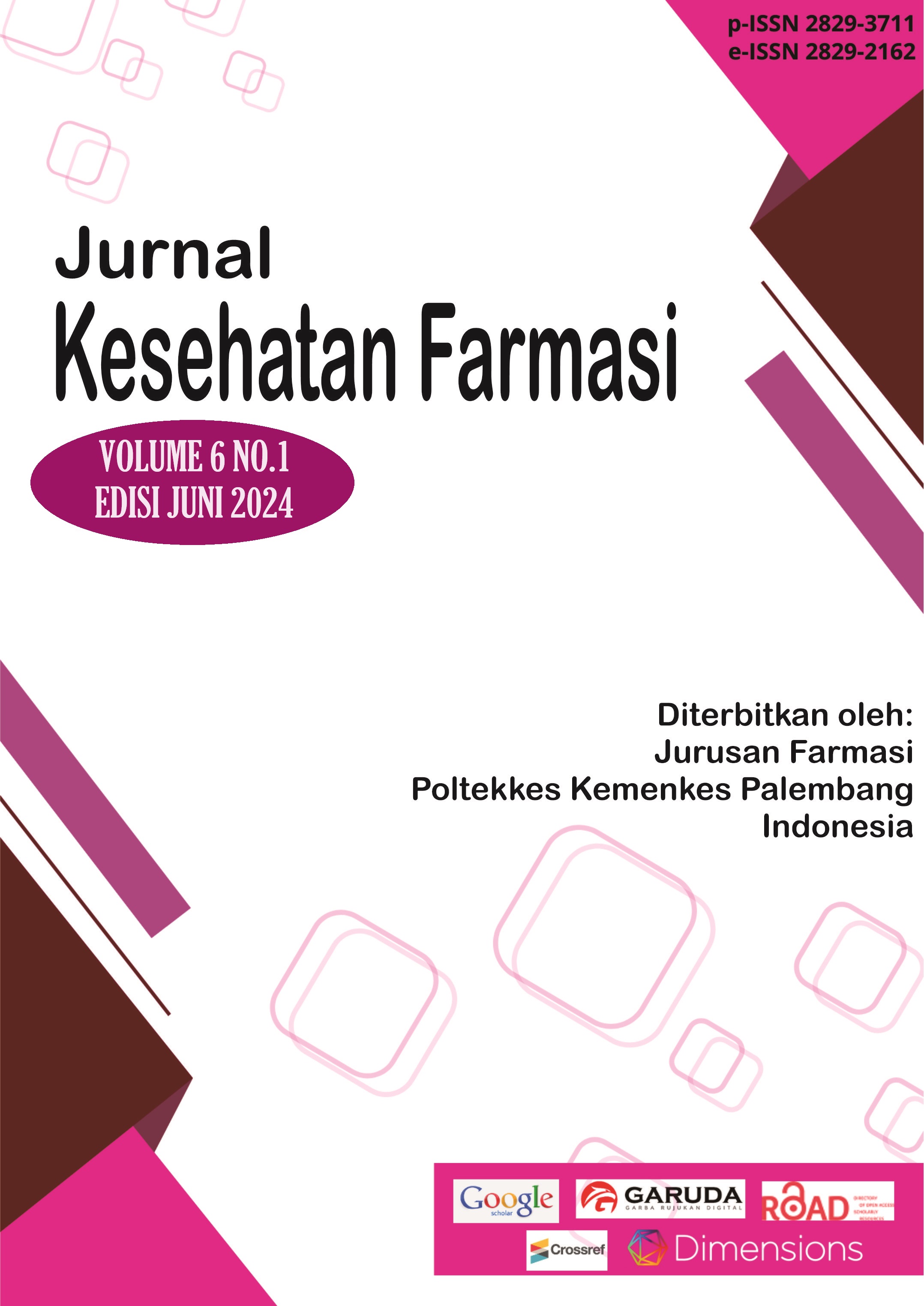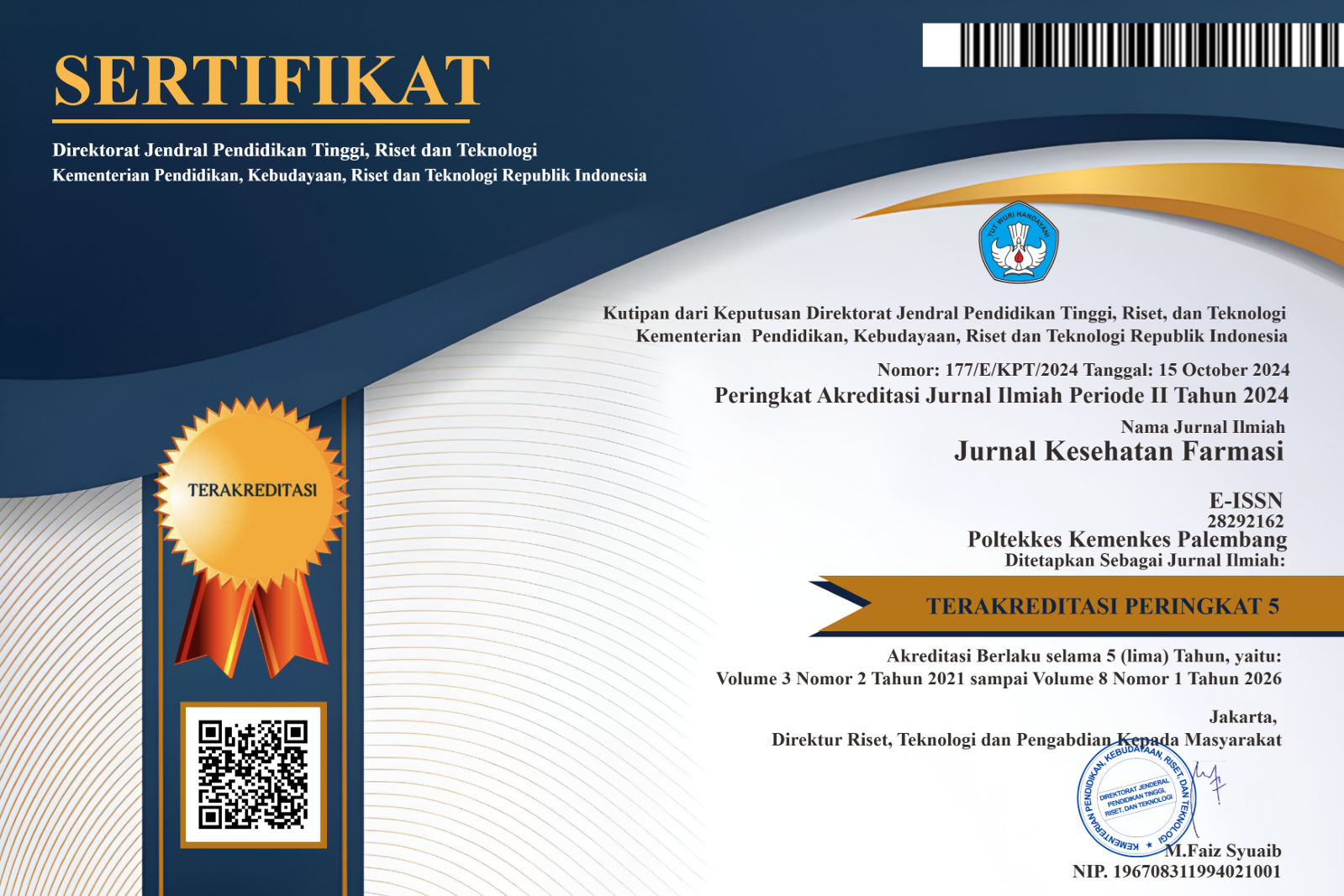AKTIVITAS ANTIOKSIDAN PARTISI CAIR-CAIR EKSTRAK BIJI PINING BAWANG (Hornstedtia alliacea) MENGGUNAKAN METODE DPPH
Abstract
Latar Belakang: Terjadinya penyakit degeneratif berhubungan erat dengan radikal bebas karena ketidakseimbangan sistem kekebalan tubuh. Senyawa yang mampu melindungi kerusakan sel-sel akibat radikal bebas adalah antioksidan. Beberapa penelitian sebelumnya menunjukkan tanaman pining bawang memiliki aktivitas antioksidan. Penelitian ini bertujuan mengetahui aktivitas antioksidan dan perbedaan nilai IC50 partisi cair-cair ekstrak biji pining bawang.
Metode: Metode pemisahan yaitu partisi cair-cair. Aktivitas antioksidan menggunakan metode DPPH dengan spektrofotometer UV-Vis. Analisis statitistik yaitu metode one-way ANOVA.
Hasil: Hasil dari aktivitas antioksidan dari vitamin C 6,526 ppm, fraksi n-heksan 35,502 ppm, fraksi air 33,995 ppm, dan fraksi etil asetat 47,507 ppm dapat dikategorikan sebagai antioksidan sangat kuat. Hasil uji statistik SPSS uji normalitas dan uji homogenitas p value >0,05, uji one-way Anova p value <0,05, uji post hoc vitamin C dengan ketiga fraksi p value <0,05 dan antara fraksi p value >0,05.
Kesimpulan: Aktivitas antioksidan masing-masing fraksi menunjukkan nilai IC50 <50 ppm dikategorikan antioksidan sangat kuat. Dari hasil uji statistik SPSS tidak ada perbedaan yang nyata dari ketiga fraksi.
Copyright (c) 2024 Jurnal Kesehatan Farmasi

This work is licensed under a Creative Commons Attribution-ShareAlike 4.0 International License.
Authors who publish with this journal agree to the following terms:
- Authors retain copyright and grant the journal right of first publication with the work simultaneously licensed under a Creative Commons Attribution License that allows others to share the work with an acknowledgement of the work's authorship and initial publication in this journal.
- Authors are able to enter into separate, additional contractual arrangements for the non-exclusive distribution of the journal's published version of the work (e.g., post it to an institutional repository or publish it in a book), with an acknowledgement of its initial publication in this journal.
- Authors are permitted and encouraged to post their work online (e.g., in institutional repositories or on their website) prior to and during the submission process, as it can lead to productive exchanges, as well as earlier and greater citation of published work














